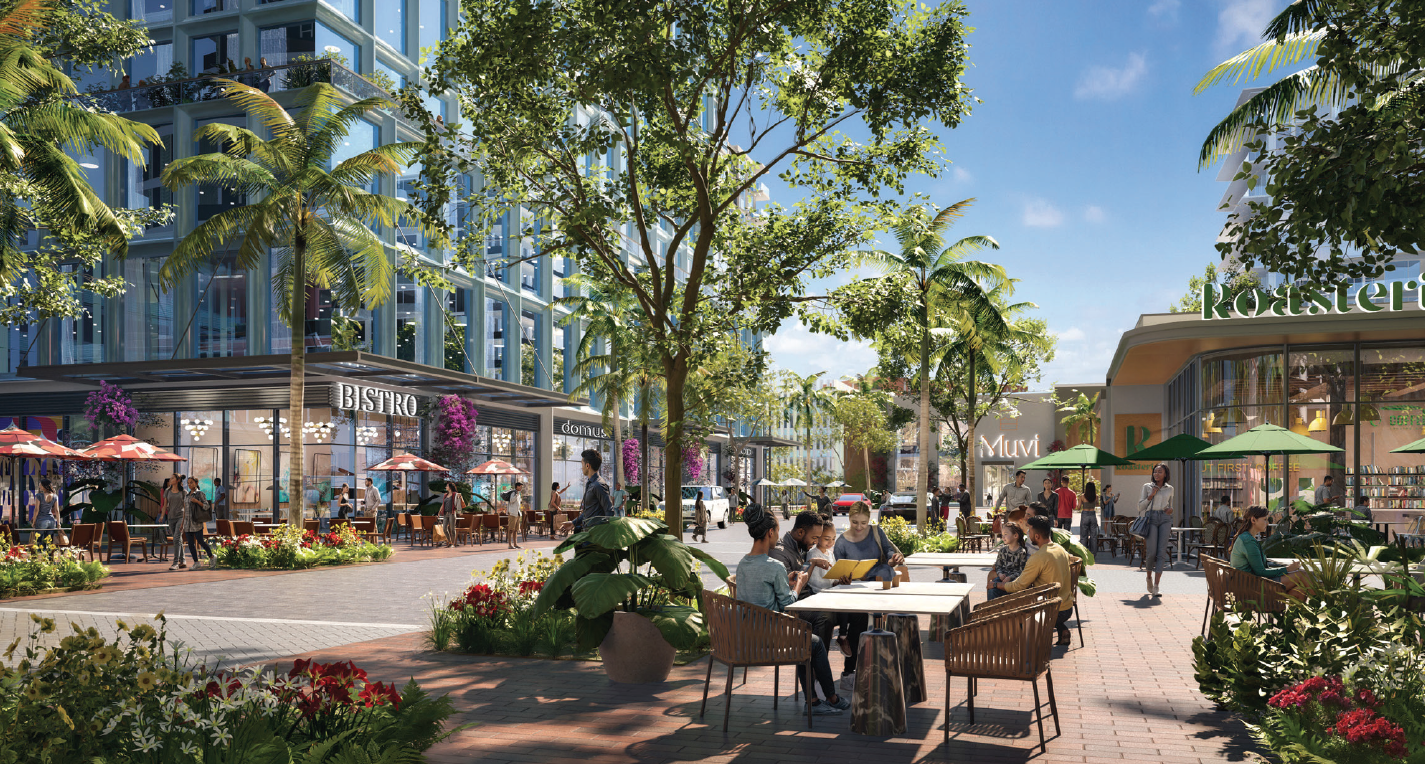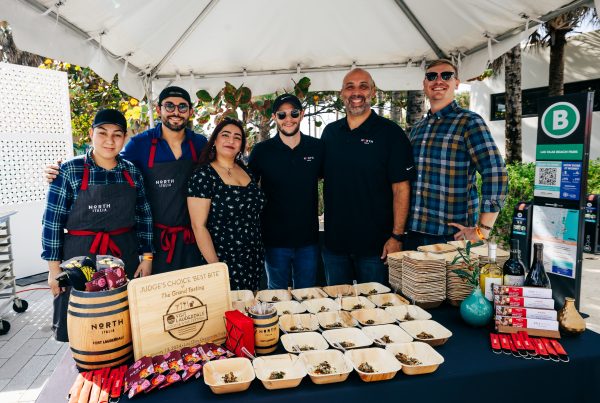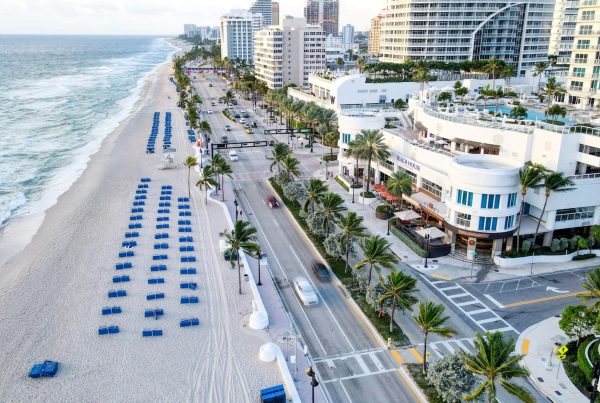In one week, the Boca Raton City Council is scheduled to make a decision that will reshape the city. Council members will choose one of four bidders for what the city calls the Government Campus Redevelopment Partnership Opportunity.
Nothing of this scope has happened since Boca Raton created Mizner Park more than three decades ago; the overall cost could reach $2 billion.
In today’s post, I will explain the “opportunity” in detail. I also will break down the two proposals that I believe are the main contenders. One is from Boca Raton City Center LLC; it’s a joint venture of Miami-based Terra Development and Palm Beach-based Frisbie Group. The other is from Related Ross, which is based in West Palm Beach.
Where would this happen? For now, the roughly 30 acres around City Hall. On the north are the downtown library and the Brightline station. On the west is Crawford Boulevard, on the east is Dixie Highway, and on the south is Palmetto Park Road.
Redevelopment, though, could spread beyond this area if the project is successful. Some, if not all, of the small commercial properties on the south side could turn over.
In addition to City Hall and the nearby community center, the area includes many other public facilities: the police station, the tennis center, the old library building, two athletic fields and the skate park. City officials have said that the police station would move to a site next to the Spanish River Library. There is no decision on the fields and skate park.
How did we get here? Seven years ago, the city asked a consultant to submit a plan for rebuilding the aging public facilities and adding new public spaces. The cost was so high that the council abandoned the idea.
In November 2022, however, the Brightline station opened. From the city’s perspective, that added a transportation element to the area and made redevelopment more likely.
How would this happen? Through a public-private partnership, known as a P3 in state law. Done properly, such partnerships save taxpayers the cost of building public facilities in return for allowing private development on public land.
In this case, the developer would build a new, larger City Hall and community center. In addition, the developer would create parks and other public spaces to enhance the area. There would be new housing, offices, shops and restaurants.
When would this happen? If the council picks a developer next Tuesday, the company and the city would negotiate an interim agreement by March 18. Among many other things, the agreement would lay out how much the developer would pay in rent to lease the site for 99 years.
Why are Boca Raton City Center and Related Ross the best proposals? Each developer is from South Florida. Principals from both companies have spent lots of time with council members and city administrators. Their proposals are the most detailed, especially regarding the public space. Both companies have good track records.
What are their proposals? Here’s a summary, a comparison and comments from team principals making their case. As the council did during last Monday’s presentations, we will go in alphabetical order.
Boca Raton City Center

The company proposes 1,129 apartments, a 150-room hotel, 250,000 square feet of offices, and roughly 157,000 square feet of stores and restaurants. For comparison, Mizner Park has roughly 200,000 square feet of retail space and 62,000 square feet of office space.
The project would have 3,434 parking spaces—2,407 in garages and the rest on the streets. Overall square footage would be roughly 2.5 million.
According to an analysis by the city’s consultant, CBRE, the project would create roughly six acres of public space. A broad “civic lawn” would face City Hall, which would move to the north end of the area with the community center. The plan envisions a new plaza around the large banyan trees in what is now the City Hall parking lot. For recreation, the project would include a racket complex. Like Related Ross, the company envisions a police substation. The proposal includes a sustainability plan, in line with one of the city’s priorities.
CBRE calculates that the project would bring the city $140 million over the 99-year term of the lease. It would create roughly 1,740 jobs after the nine years of construction.
Related Ross

The company proposes 650 apartments, a 400-room hotel, 975,000 square feet of offices, and 235,000 square feet of retail and restaurants. For comparison, Boca Raton has 1.8 million square feet of total office space. The office space and the hotel size are the obvious differences between the Related Ross plan and the Boca Raton City Center plan.
The project would require 4,100 parking spaces. The CBRE analysis did not include a breakdown of the parking. Total square footage would be 3.75 million.
CBRE calculates that Related Ross also would create roughly six acres of public space. The most notable aspect of the proposal is creation of a new “curb-less” street—Northwest Third Avenue. Ross Related would move “the center of pedestrian activity” from Northwest Second Avenue—which bisects the area—to this new street. The company would “make a financial contribution” to athletic fields outside of the area. Related Ross also has a sustainability plan and would work with the city to add a second platform at the Brightline station.
According to CBRE, the project would generate roughly $175 million in rent. It would create 2,476 jobs at completion.
Pitches from Related Ross and Terra/Frisbie
On Thursday and Monday, I spoke with Cody Crowell and Rob Frisbie, Jr., who are part of Frisbie Group’s management team, and Jordan Bargas, a Related Ross senior vice president. Below are their respective pitches for the Boca Raton project.
Boca Raton City Center
Crowell and Frisbie stressed the size difference between their plan and the Related Ross proposal, roughly 1.25 million square feet. Crowell called it “the right-sizing of this project” to fit Boca Raton. They based the plan on comments from council members, staff and residents. “I don’t think any of our competitors can say that.”
Both bidders emphasize the need to “activate” the area. As one can tell from the numbers, however, Related Ross believes the biggest factor is office development. Crowell and Frisbie believe that residential is the key—and that their business model is more realistic.
“We have spoken with brokers and landlords,” Frisbie said, to determine “true demand” for office space. They don’t want to “cannibalize” the market—taking tenants from other parts of the city. More office, he said, also would “bring congestion,” since office development generates more traffic than residential.
Frisbie said the company is not seeking “a radical transformation.” He added, “We want it to feel like a natural evolution” from Boca Raton’s “strong foundation.” Related Ross, he said, wants to “re-create” other cities. Frisbie believes that the private and public space would offer “something for everyone,” with “curated”—unique—retail, plus parks, athletic facilities and playgrounds. “There is plenty of demand” to schedule events every day and at night.
As for the financial benefit, Frisbie said the company has proposed an incentive lease payment schedule that, if adopted, would make Boca Raton City Center’s return equivalent to that from Related Ross. Frisbie estimates that the total cost will be “in excess of $1 billion.”
Frisbie said, “We define success as what’s in the best interest of Boca Raton. Our [plan] is the most competitive, most complete and most thoughtful.”
Related Ross
Bargas said the company went big on offices because of Boca Raton’s “amazing infrastructure”—schools, hospitals—that would enable Related Ross to attract tenants new to the market.
Since the pandemic, Related Ross has opened office buildings in West Palm Beach to capitalize on the movement of financial firms from New York. Those buildings, Bargas said, are “pretty much full,” which he believes makes Boca Raton the next logical destination.
Office space, Bargas said, makes sense because there’s “already so much residential downtown.” Because of its reach, Related Ross is “uniquely capable of delivering” those tenants. That strong office component would help create what Related Ross calls “an 18-hour day” within the area.
Echoing Related Ross Founder Stephen Ross’s comments last week before the council, Bargas stressed the company’s expertise across all aspects of the project. Terra and Frisbie, he said, have primarily developed residential.
Bargas extended that comparison to the public space. Related Ross, he said, has an entire department that works to activate public areas at all the company’s projects. Though he emphasized that Related Ross doesn’t want to re-create CityPlace in West Palm Beach—which Ross developed in the mid-1990s—the company does adopt “lessons learned” from that project. One is the need to activate public space “24/7.”
Finally, Bargas noted that Related Ross has enough “equity” to finance the project. He estimated the total cost at nearly $2 billion. Related Ross also calculates that its project would bring a much higher economic return.
Bargas said Related Ross’s plan would stop what he called “the brain drain” and “bring talent back to Boca.” He added, “We’d like to start as quickly as possible.”
Specifics on size of City Hall and community center
Both bidders have said they are “flexible” on details. Final numbers likely will be different from the original proposals. But the city last week did give the bidders specifics on two key public buildings.
Deputy City Manager Andy Lukasik said the desired size of city hall is 85,000 square feet. Current space is about 62,000 square feet. The city wants the community center to be roughly 35,000 square feet—nearly triple the current size. Bidders can adjust their plans accordingly.







